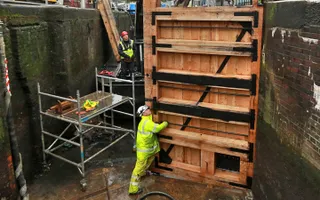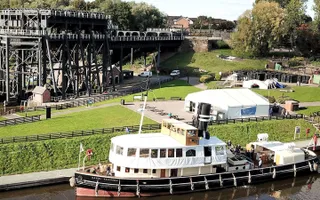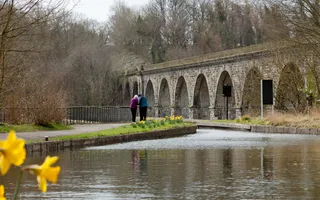The legacy of this river navigation’s industrial history has been, in many places, the creation of special places for nature to flourish.
The River Weaver has been straightened in places to improve navigation, leaving the original line as a quiet backwater where wildlife thrives. The salt mining industry that the river served has also left its mark. Mining subsidence has left lakes, known as flashes, where the salty water is home to coastal plants and a rich array of birdlife. Steep-sided valleys along parts of the river support ancient woodlands untouched by humans.
Days out along the Weaver Navigation
A must-see on the River Weaver is the impressive Anderton Boat Lift. This vast restored Victorian structure hydraulically raises boats 50 feet to the Trent & Mersey Canal.
The history
For centuries, the River Weaver has been used for the transport of salt. But manufacturing salt from brine requires coal for fuel (to evaporate the brine), and so merchants were planning improvements along the river as early as the 17th century. By then, sailing barges had begun navigating along the Weaver from the Mersey to Winsford, bringing coal in and salt out.
Various Acts authorised improvements allowing the salt industry to prosper, and throughout the 19th century, the navigation was consistently profitable. The formerly tidal Weaver below Pickerings Wharf underwent substantial modification.
Connecting with the Trent & Mersey Canal
Eventually, the area became known for the production of other chemicals on increasingly larger scales, and it became commonplace to see vessels of 500 tons or more navigating far inland. The trustees of the Weaver Navigation were determined to connect it with the Trent & Mersey Canal running more than 50 feet (15m) above the level of the river: locks would have been impractical and expensive, so they designed the extraordinary Anderton Lift, which opened in 1875.
The lift underwent many modifications but finally succumbed to the effects of corrosion from the surrounding works. It was effectively abandoned in 1983. Having lain unused for almost two decades, it has been now fully refurbished and is once again operational, raising and lowering boats between the canal and the river in two caissons.











